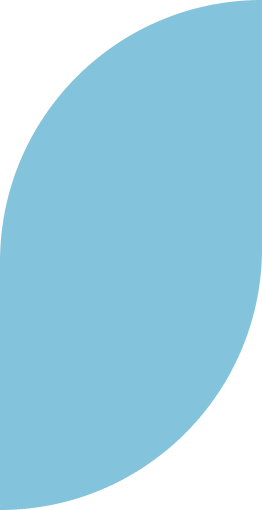
Call us: 1-800-123-4567

Amortization
It is the actual number of years to pay your mortgage balance down to zero. This can extend beyond the term of the loan. In Canada, the amortization period is between 25-30 years. So while you may have a 5-year loan, the amortization period could be 25 years.
Appraisal
Appraisal is an estimate of the current value of your property that you offer as security for a loan. An appraisal is for mortgage lending purposes, and its value may be less than the purchase price of your property.
Bridge Financing
Bridge financing or bridge finance refers to interim finance. It is the finance used to bridge the gap between the closing date on the purchase of your new home and the closing date on the sale of your current home.
Closed Mortgage
The terms of a closed mortgage mention that you do not have the flexibility for payout before the maturity date. You may be eligible for an early payout under certain circumstances by paying extra charges. For instance, a lender may discharge a closed mortgage at a predefined cost of three months’ interest or the Interest Rate Differential (IRD).
Collateral Mortgage Charge
A collateral charge means securing a loan against your property. A collateral mortgage is re-advanceable, which means your lender can lend you more funds after the official closing of your house. In this situation, you don’t need to refinance and undergo legal formalities.
Conventional Mortgage
It is a loan for no more than 80% of the appraised value or purchase price. You can qualify for a conventional loan if you make a down payment of at least 20% of the purchase price.
Credit Report
The credit report is your complete payment history available at a credit bureau. Getting a credit report does not impact your credit in any way.
Down Payment
It is the initial lump sum you pay towards purchasing a home. The amount represents the difference between the purchase price and the loan amount. The larger the down payment, the lesser mortgage you will require.
Default
A default situation occurs when you, as a borrower, fail to meet the legal obligation in the mortgage contract. This happens most commonly when you are unable to make your monthly payments.
Delinquency
Delinquency is when a home buyer fails to make monthly payments on time. This leads to a forced sale on the purchased home or property.
Equity
Equity in your property is the amount you’d get after paying off your mortgage should you sell your house. In other words, it is the difference between the selling price of your home and the total debts registered against it.
Fixed Rate Mortgage
The rate of interest for this type of loan remains fixed, unvaried for the term of your mortgage. In Canada, the typical term is for 5 years.
Flexible Mortgage
Unlike a closed mortgage, where you do not have or have very restrained payout options before the maturity date, the flexible mortgage offers the flexibility to renew your mortgage early on. You can opt for a fixed-rate closed term for a year or longer without incurring a prepayment charge.
Gross Monthly Income
It is your total household income without calculating deductions such as debt payments, taxes or expenses. It’s one of the major considerations for lenders when they decide how much you’ll be able to afford per month towards a home loan.
Gross Debt Service Ratio or GDS
Mortgage payments, property taxes etc., are considered as shelter costs. Dividing the shelter costs by your gross monthly income and multiplying by a hundred gives you the Gross Debt Service Ratio. This ratio is a reference point for lenders to gauge your ability to make monthly mortgage payments.
High Ratio Mortgage
As a home buyer, you need to pay 20% of the total purchase price as a down payment. But if you choose not to do so and apply for a mortgage, you’ll end up with a high-ratio mortgage. In other words, it is the ratio between the loan amount and the purchase price and is also known as the loan-to-value ratio or LTV.
Interest Adjustment Date or I.A.D.
Interest Adjustment Date is usually the first of every month. It is the date from which your interest starts to accrue. Your first regular monthly principal and interest payment are due a month after the IAD.
Lien
Lien means legal entitlements secured against a property for outstanding payment of a debt or obligation.
Land Transfer Tax
Upon purchase of a property, you are liable to pay a tax to the provincial or municipal government. This applies to secondary home buyers. As a first-time home buyer, you are eligible for rebates.
Mortgage Default Insurance
It may not be possible for you to buy a property outright, and you may be in a position to pay anywhere between five and twenty percent of the down payment. Depending upon how much you pay upfront, you might need default insurance. It is the security you reserve for not being able to pay the twenty percent down payment of the total purchase price.
Mortgage Maturity Date
Mortgage maturity date is the day on which your principal amount is due. On this date, you must get your agreement to renew or pay the balance in full.
Market Value
It is the lowest price that a seller would agree to sell the property. For a property buyer, it is the highest price they’d be willing to pay for that same property.
Net Effective Income
This is your annual income, excluding any deductions or taxes.
Offer to Purchase
It is the formal, legal agreement between a buyer and seller for the sale of the property. The document contains the final price for the specified property and conditions if any.
Open Mortgage
It is a mortgage that lets you repay your principal amount at any time without a penalty. Unlike a closed mortgage, the terms in an open arrangement are quite flexible. There are fixed-rate open mortgages and variable rate mortgages.
Origination Fee
An origination fee is an amount a lender charges you for processing a loan. It is a percentage of the total loan amount you’ve borrowed.
Prepayment Penalty
Your lender may charge you if you break your contract midway or transfer your mortgage to another lender before the end of the term. You may also get penalized for paying more than the allowed additional amount on top of your monthly payments or pay back your entire loan before the completion of the term. In all these situations, the fee you pay to your lender is marked under prepayment charge or prepayment penalty.
Prepayment Privileges
Prepayment privileges mean you can make extra lump sum payments on your mortgage to complete your loan faster. Your contract should mention how many percentages these regular payments can be increased.
P.I.T.H
P.I.T.H stands for principal, interest, taxes and heat. It represents your monthly housing expense. You and your lender need to consider this information when calculating how much you can qualify for P.I.T., i.e. How much your principal, interest and taxes could stand.
Principal
The principal amount is the financial obligation you still need to pay while on a mortgage. This outstanding balance is exclusive of the interest rate you accrue or the one you’ve already paid.
Refinance
You opt for refinancing when as a buyer, you arrange a new mortgage or switch from a conventional to a collateral mortgage. In this case, your previous loan gets paid off or discharged from the proceeds of the new loan, called the ‘equity take out.’
Renew
Renewing means extending a loan agreement with the same lender for another term. However, some criteria may get revised, for instance, the term length or the rate of interest.
Secondary Homes
As the name suggests, a secondary home is essentially your second property. It is not uncommon to come across this term as a vacation home since most people use it for vacays and getaways. It is a fantastic way to build wealth over time and capture the appreciation of a real asset.
Total Debt Service Ratio or TDS
Your lender may calculate your total debt service ratio for loan consideration. The total debt service is the calculation you get by adding up any or all your monthly debts and dividing it by your monthly income. You might also commonly come across the term bottom ratio, which means the same thing.
Term
The term refers to the specific period for which the interest rate, payment and other mortgage conditions get set. Your mortgage becomes due and payable at the end of the term unless it gets renewed.
Title
A legal document that provides ownership verification of your property.
Title Insurance
Title insurance is like indemnity insurance that protects home buyers and lenders against losses incurred due to liens, encumbrances, or defects in the title or actual property ownership. Traditional insurance protects you against future events, while title insurance covers claims for past losses.
Underwriting
Underwriters evaluate the degree of risk involved in paying off your loan. The process helps to lock in fair borrowing rates for loans, set appropriate premiums and establish a secured market by pricing investment risk.
Variable Rate Mortgage
With a variable rate mortgage, there is no fixed interest rate on the mortgage for your home loan. Instead, the interest rate gets adjusted as the benchmark or reference rate fluctuates. While the payment amount remains fixed for the term, the interest rate fluctuates with any changes to the prime interest rate. This is also sometimes known as the Adjustable Mortgage Rate.
Now that you’ve become a pro with the mortgage terms, it’s time to calculate what your payments can look like. Getting an estimate of the monthly payments will give you a headstart on buying your dream home. Ready?
Talk to someone who can get you the best rate, now.
By using this website, you accept our Terms & Conditions and Privacy Policy.